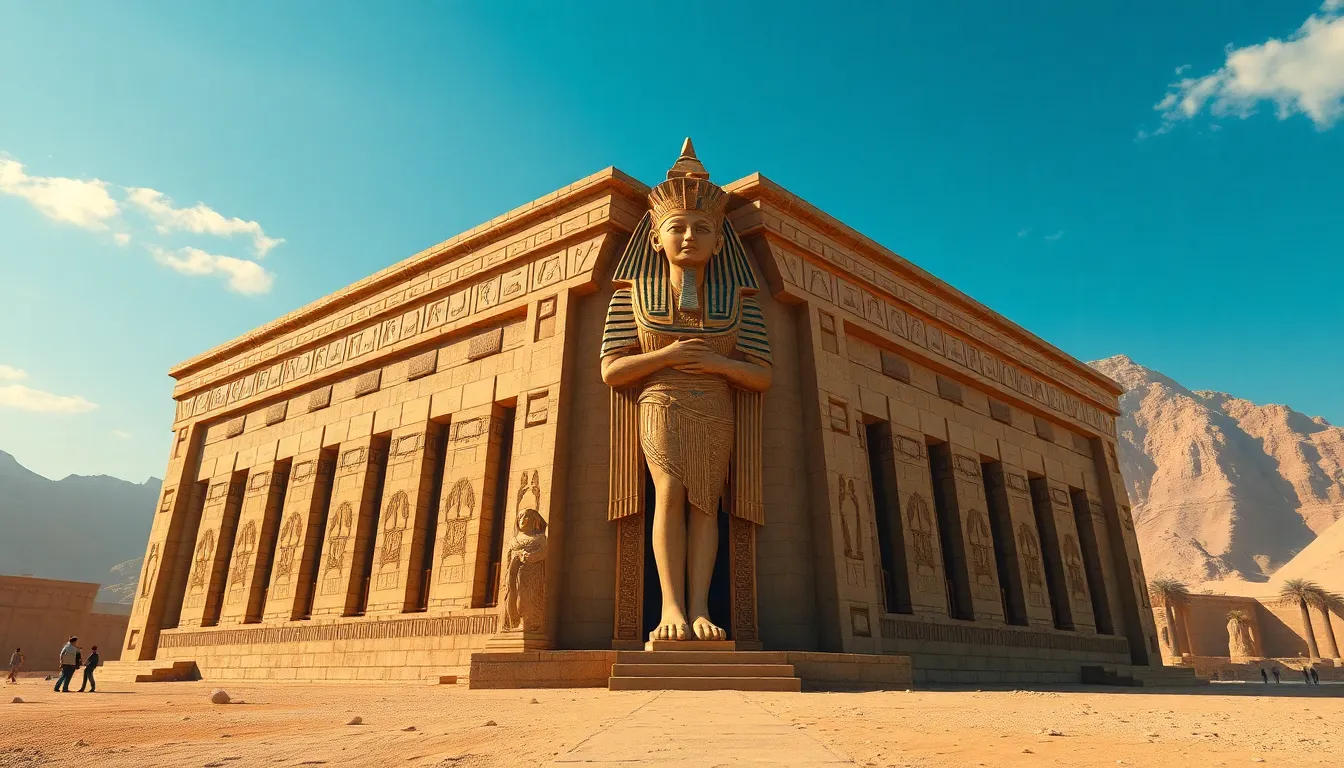The Temple of Maat: The Goddess of Truth
I. Introduction
Maat, the ancient Egyptian goddess, personified truth, justice, and cosmic order. She was a central figure in Egyptian mythology, representing the balance and harmony necessary for a stable society. The importance of truth and order in Egyptian culture was paramount, as it influenced their laws, governance, and daily life.
This article aims to explore the Temple of Maat, its architectural features, rituals, and the cultural significance it held in ancient Egypt. By understanding the role of Maat and her temple, we can gain insights into the values and beliefs that shaped one of history’s most fascinating civilizations.
II. Historical Context of Maat
Maat’s origins can be traced back to the earliest days of ancient Egyptian civilization. According to myth, she was born from the primordial waters of chaos and was often depicted as a woman with an ostrich feather on her head, symbolizing truth.
As the embodiment of cosmic order, Maat played a crucial role in ensuring the balance of the universe. Her influence extended to various aspects of life, including:
- Maintaining harmony in nature
- Guiding the actions of the Pharaohs
- Determining the fate of souls in the afterlife
Pharaohs, seen as the earthly representatives of the gods, were expected to uphold Maat’s principles. Their rule was legitimized through their ability to maintain order and justice in society, ensuring a smooth transition to the afterlife for their subjects.
III. The Temple of Maat: Architectural Features
The Temple of Maat was not only a place of worship but also a significant architectural marvel. Its layout typically included:
- A grand entrance adorned with intricate reliefs
- A central sanctuary housing the statue of Maat
- Courtyards for rituals and offerings
Symbolic elements in the temple’s design reflected Maat’s ideals. For instance, the use of the ostrich feather motif was prevalent throughout the architecture, emphasizing the goddess’s connection to truth and justice. Comparatively, the Temple of Maat shared similarities with other significant temples, such as the Temple of Karnak and the Temple of Luxor, yet it was distinguished by its unique focus on moral principles.
IV. Rituals and Practices at the Temple
Rituals dedicated to Maat were conducted daily, reinforcing her significance in society. Offerings included:
- Food and drink
- Incense and flowers
- Prayers and hymns
The priests and priestesses of Maat played essential roles in maintaining the temple. They were responsible for conducting rituals, ensuring that the goddess was honored, and preserving the temple’s sanctity. One of the most significant ceremonies associated with Maat was the Weighing of the Heart, where the deceased’s heart was weighed against her feather. This ceremony determined the soul’s fate in the afterlife, symbolizing the ultimate judgment of one’s life and actions.
V. Maat’s Influence on Egyptian Law and Governance
Maat’s principles were deeply embedded in Egyptian law and governance. The legal system was designed to reflect her ideals of truth and justice. The Pharaoh was seen as the guardian of Maat, with a duty to:
- Uphold laws that aligned with her principles
- Ensure fairness and order in governance
- Set an example for the populace
Examples of laws influenced by Maat’s principles include regulations on trade, marriage, and societal conduct. The emphasis on ethical behavior and justice was a testament to her lasting impact on Egyptian civilization.
VI. Maat in Art and Literature
Maat was prominently featured in ancient Egyptian art and iconography. She was often depicted in:
- Wall reliefs within temples
- Statues representing her as a woman with wings
- Hieroglyphic inscriptions emphasizing her attributes
Literary references to Maat can be found in texts such as the Book of the Dead, where her principles guide the deceased through the afterlife. The cultural impact of Maat extended beyond ancient Egypt, influencing later civilizations that regarded truth and justice as fundamental values.
VII. The Legacy of Maat and Her Temple
With the decline of ancient Egyptian civilization, the worship of Maat gradually diminished. However, her legacy lived on through modern interpretations of justice and truth. Today, Maat’s principles resonate in contemporary discussions surrounding:
- Legal systems and ethics
- Social justice movements
- Philosophical debates on morality
Reviving Maat’s ideals can provide valuable insights into the importance of truth and order in our modern world, encouraging societies to reflect on their values and actions.
VIII. Conclusion
Maat’s significance in ancient Egyptian society, along with the Temple of Maat, illustrates the profound connection between truth, justice, and cosmic order. The temple served as a beacon of these values, reinforcing the belief that maintaining balance was essential for a prosperous civilization.
The enduring legacy of Maat reminds us of the importance of truth and order in today’s world. As we reflect on her influence, we recognize the timeless relevance of these principles in guiding human civilization towards a more just and harmonious existence.




